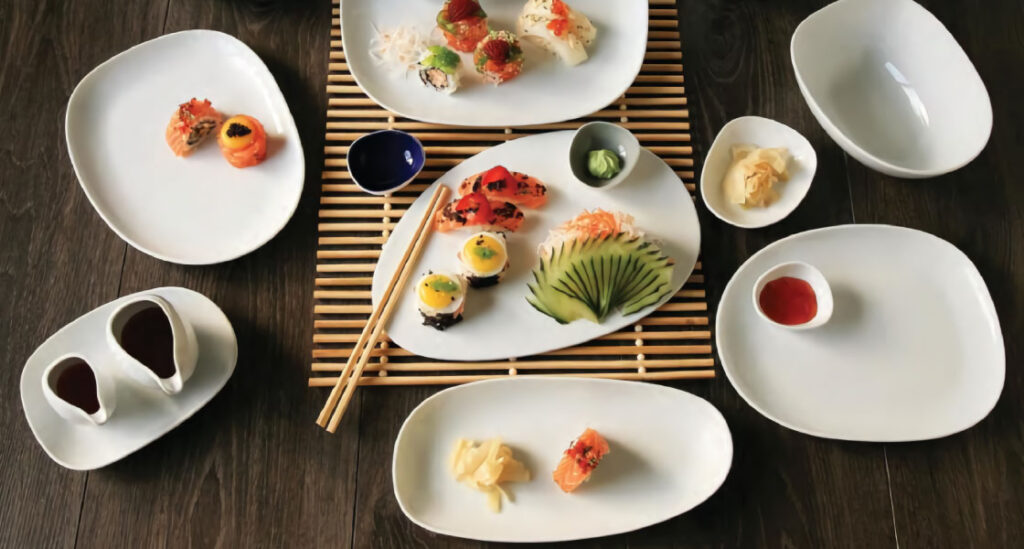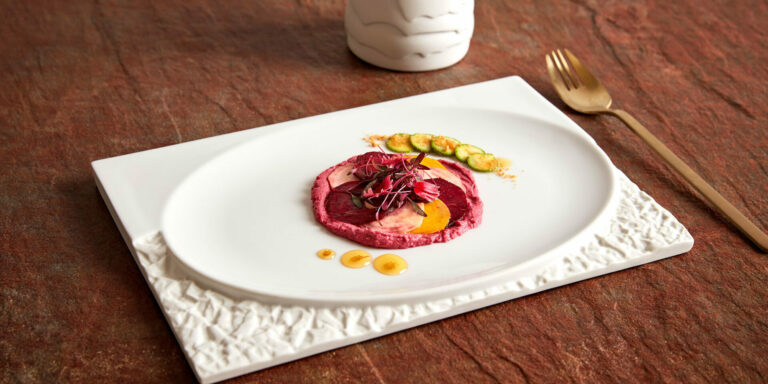
Menu

Sushi has been evolving along several centuries and has become a delicacy, conquering thousands of people around the world. This global expansion has brought about changes in the classical preparation techniques that have adapted to the culture of each country.
Centuries of evolution of the Japanese delicacy
Sushi was reported to have originated in the fourth century BC. At that time, it consisted only of an eastern transport and conservation technique, whose sole purpose was to preserve fish. At the same time, the viscera and the head were removed, then salted and preserved in boiled rice.
It was not until much later, in the fourteenth century, that this technique began to be refined to create a gastronomic delicacy. It was around this time that Japanese began to eat not only the fish, but also the rice that surrounded it. However, we were still far from the sushi we know so well today.
By the 17th century, due to the abundance of fish across Japanese markets, this method of conservation fell into disuse. The fish was then eaten raw, accompanied with steamed rice and seasoned with vinegar. Thus, it was intended to recreate an acidic taste, equivalent to what once resulted from the fermentation of fish.
At this time, small outlets began to appear, the Yatais. The purpose of these places was to provide people with fast and convenient food.
It was Hanaya Yohei (1799-1858) who was responsible for creating the sushi as we know it nowadays. Considered the first sushi man in history, Yohei perfected the preparation techniques and provided them with a new presentation. He also added some elements such as soy sauce, ginger and wasabi.
The different types of sushi
To better appreciate this oriental delicacy, we present some of the most well-known varieties of sushi, in their traditional version.
- Maki: This is, perhaps, the most easily identified sushi piece in the world. The rice is wrapped in a nori leaf (dried seaweed), by containing various ingredients inside, such as fish, fruits and vegetables;
- Nigiri: Consists of a hand-shaped rice portion, topped up with a slice of raw fish or boiled shrimp;
- Uramaki: It is an opposite version of maki. In this case, the seaweed is inside the preparation and the rice is outside;
- Hossomaki: Hosso means thin. The amount of rice is small so as to obtain a thin and compact layer. It is served with only one ingredient, usually fish;
- Futomaki: This is the opposite of Hossomaki, that is, a generous piece, both in size and ingredients inside;
- Gunkan: Rice is boat shaped and wrapped in seaweed. At the top of the piece, there are fish eggs;
- Temaki: Rice and fish are wrapped in dehydrated seaweed and rolled by the cone-shaped sushiman;
- Oshi: It’s a piece similar to niguiri, but in a different format. Instead of being molded by hand, it is pressed with a wooden mould, in order to obtain a quadrangular shape;
- Sashimi: Contrary to what most people think, sashimi is not considered sushi. However, it is present in any meal of this kind. It simply consists of delicately sliced raw fish.
Some basic rules on sushi intake
Sushi is much more than portions of raw fish rice: it comprises a whole culture and ancient traditions. Therefore, there are some traditions that should be respected when appreciating it.
The art of good eating
- Each of the pieces must be swallowed as a whole and it is considered incorrect to break them. Due to their large size, futomaki and temakis are exceptions to this rule;
- Cutlery should not be used for eating, but the famous chopsticks (hashi). Interestingly, the way considered as the most traditional is to eat the pieces by holding them with your own hands.
- A meal of this type should start with low-fat fish pieces such as snapper or sea bass. Only afterwards should the fatty fish, such as horse mackerel, mackerel, tuna and salmon be consumed.
The side dishes
- Soy sauce, ginger and wasabi, which usually accompany these meals, should be used sparingly. The purpose of soy is to season the fish, so only the fish should touch that sauce. Ginger is used to clean the palate between different types of pieces. Lastly, wasabi has bactericidal properties and aids in digestion. It should be placed on top of the fish in small quantities;
- In Japan, these components are not usually available to customers during the meal. It is the sushi man himself who defines the correct quantities to serve and puts them in the pieces.
The drinks
- To accompany the meal, the most traditional drinks are Japanese beer, sparkling wine or sake. Finishing the meal by drinking a hot green tea is a way of expressing satisfaction;
- You should never serve yourself the sake! This is one of the most respected rules in Japan. The drink should be served by the person sitting next to you or in front of you.
At Costa Verde, we like to adapt our products to different cultures and cuisines. For its exuberance and elegance, sushi should be presented exquisitely. As such, all the freshness and beauty of the pieces deserves to be displayed on top quality porcelain.
For platting, we suggest our Isola, Opera and Eclipse collections, because they combine subtlety with a bold style. Find the perfect balance to highlight this delicacy, which has become one of the most famous in the world.
Subscribe our blog!




